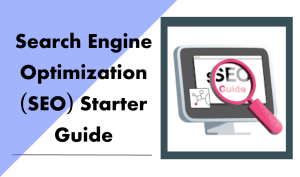Search engine optimization (SEO) is the process of improving the ranking of a website in search engine results pages (SERPs). This can be done by optimizing the website for keywords and/or by paying for ads that target those keywords. Given that Google enjoys a near-monopoly on web search, optimizing your website for top rankings is critical to success.
Copywriting is an essential part of online marketing, and there are many different ways to write compelling copy that can help you drive traffic to your website or blog. One of the most effective methods of writing copy is SEO (search engine optimization), which is a strategy used to make your website content appear high up on search engine results pages.
In this article, we’re going to outline the basics of SEO and show you how to use SEO tools to improve your website’s ranking. So whether you’re a beginner or an experienced copywriter, read on for a wealth of tips and tricks! SEO, or search engine optimization, is the practice of improving the visibility of a website or web page in search engine results pages (SERPs).
What is SEO?
SEO is the process of optimizing a website for search engine optimization. This includes ensuring that the website content is both relevant and interesting to users, as well as optimizing the website’s title, meta description, and other elements to improve its rank in search engine results pages.
There are many different techniques for optimizing a website for search engines, but the most important part is always to experiment and find what works best for your site.
SEO can be achieved by optimizing your website content, appearance, links, and on-page elements like titles, meta descriptions, and headings. By improving your website’s ranking in Google, you can attract more visitors and increase your website’s revenue.
There are many factors that go into SEO including keyword research, developing a well-executed on-page strategy, and promoting your site through online channels. However, the most important part of SEO is creating high-quality content that users will want to find and read.
If you want to learn more about SEO or want to start improving your website’s ranking in Google, check out our blog section for more tips and resources!
What are the Different Types of SEO?
There are a few different types of SEO: on-page, off-page, and hybrid.
On-page SEO is all about improving your website’s content to rank higher in search engine results pages (SERPs). This includes things like optimizing your titles, descriptions, and keywords; adding images that are relevant to your topic; and making sure your website is mobile-friendly. Off-page SEO involves linking back to your website from high-quality websites that are relevant to your industry.
How Does SEO Work?
SEO is an acronym for “Search Engine Optimization” and refers to the practice of improving the visibility of a website or web page in online search engine results pages (SERP).
The good news is that SEO can be done relatively inexpensively with a little planning and effort. This blog will discuss some of the basics of SEO including how to measure success, find relevant keywords, create effective content, and optimize your website.
What are the Benefits of SEO?

There are many benefits to SEO, including improved website traffic and better rankings on search engines.
Here are some of the most common benefits:
1. Increased Website Traffic
Improving your website’s SEO can help you attract more visitors from search engines. In fact, a study by Moz found that increasing your website’s visibility by 35 percent can lead to a 60 percent increase in unique visitors. This means that if your website is not ranking well in search engines, improving your SEO could be the key to driving more traffic to your site.
2. Better Rankings on Search Engines
One of the most important benefits of SEO is better rankings on search engines. This means that your website will be more likely to appear at the top of results for certain keywords when people search for them. Better rankings can result in increased visitor traffic, as well as increased brand recognition and sales.
3. Increased Visibility and Brand Recognition
SEO can also lead to greater visibility and brand recognition for your business. When people see your website appearing high up on search engine results pages (SERPs), they’re likely to click through to learn more about what you have to offer. Additionally, having a well-ranked website can give you an advantage in competing for business online.
4. Reduced Costs and Time Spent on Maintenance
Having a well-optimized website can also reduce the costs and time spent on maintenance tasks, such as updating your website’s content or logo. Additionally, improved SEO can lead to higher click-through rates (CTRs), which means that more people are likely to actually make a purchase from your website.
How Can You Improve Your SEO?
If you want to improve your SEO, there are a few things you can do.
Here are some tips:
1. Make sure your website is well-optimized for search engines. This means that your website content is keyword rich, your titles are keyword dense, and your anchor text links pointing to pages with relevant keywords. You can use online SEO tools to help you check your rankings and optimize your website.
2. Create quality content. Your website’s success will depend in part on the quality of the articles and information you provide. Make sure your articles are well-written and concise, and that they include keywords.
3. Promote your website through social media and other online channels. Share interesting blog articles on social media, and consider using Google AdWords or other advertising methods to generate traffic to your site.
4. Monitor your website’s analytics regularly to track progress and make necessary adjustments.








